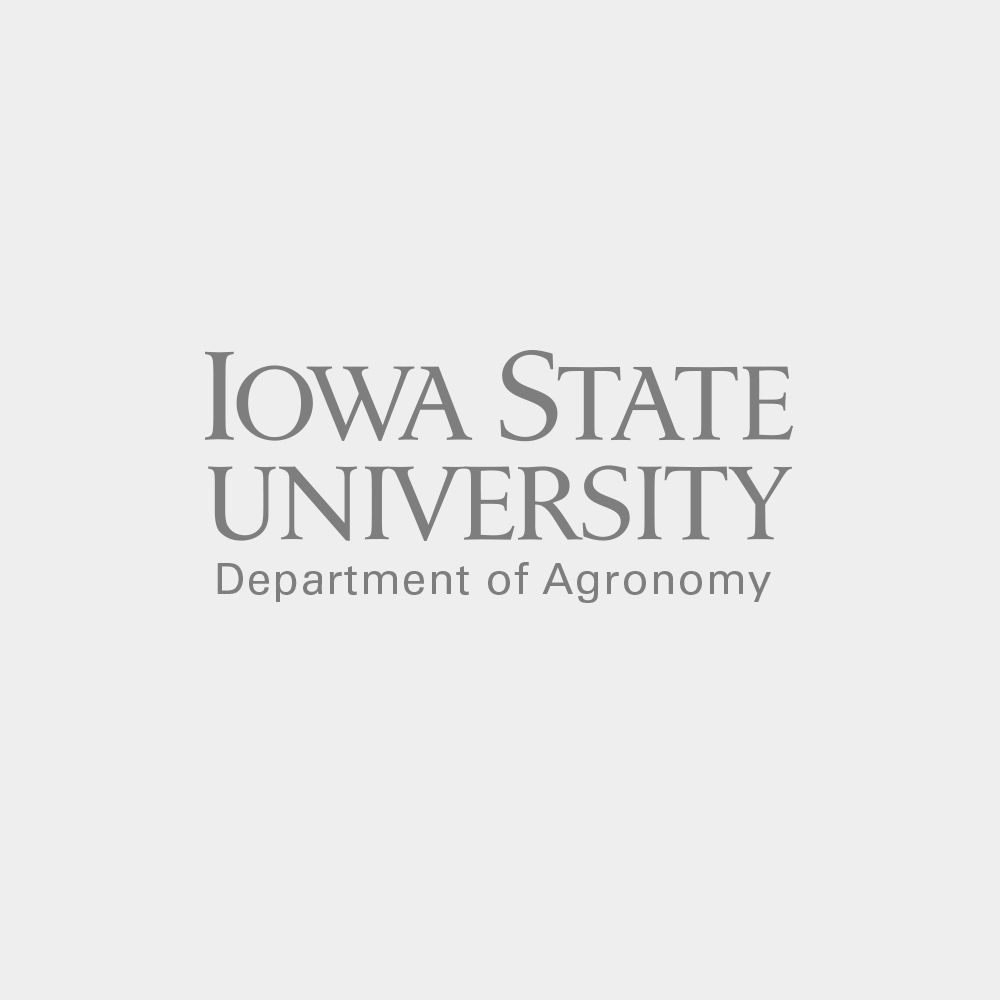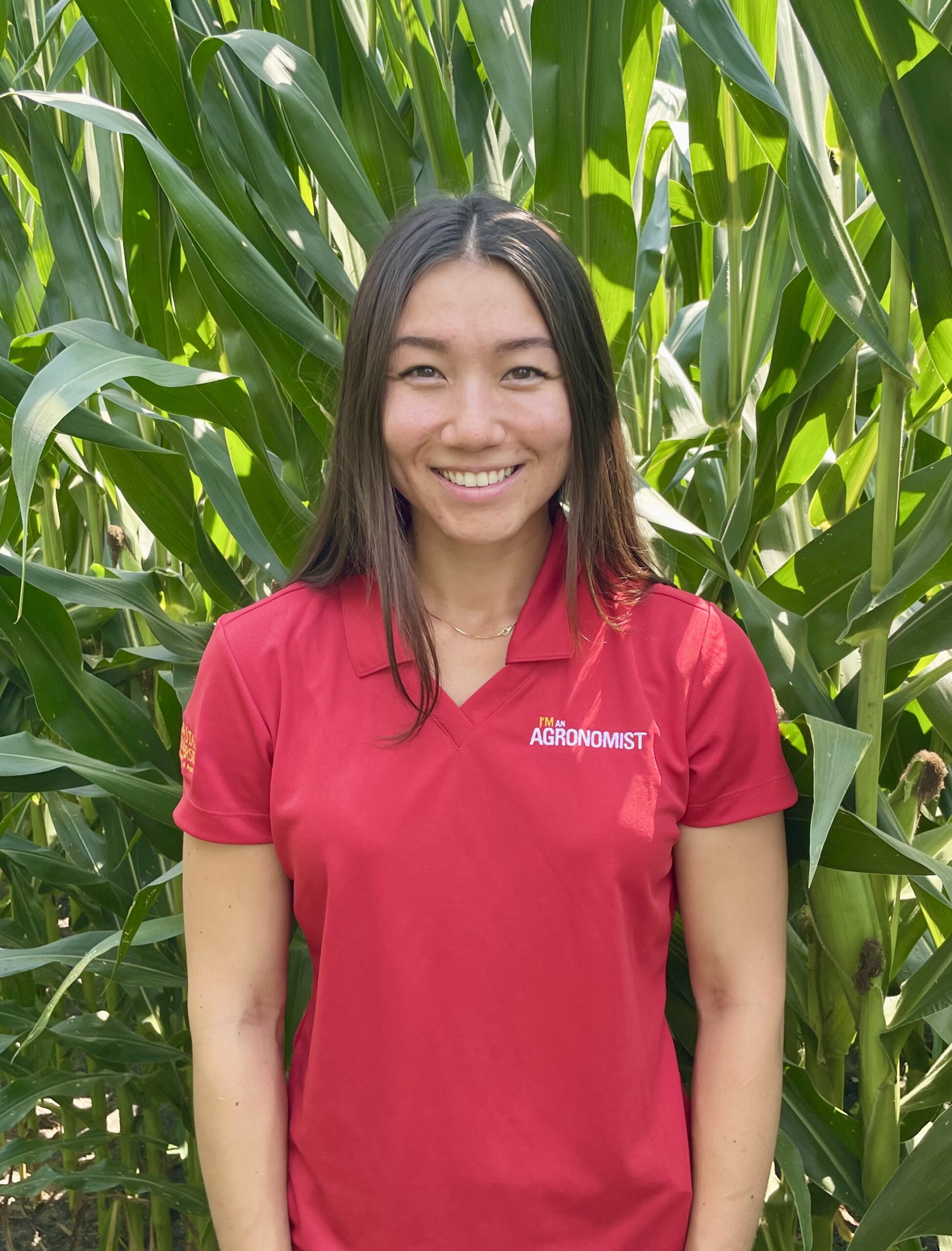
1569 Agronomy, 716 Farm House Ln
(515) 294-2757
jmyu@iastate.edu

1569 Agronomy, 716 Farm House Ln
(515) 294-2757
jmyu@iastate.edu
About
Jianming Yu is Professor, Pioneer Distinguished Chair in Maize Breeding, and Director of Raymond F. Baker Center for Plant Breeding in the Department of Agronomy, Iowa State University. The focus of Yu’s program is to address significant questions in quantitative genetics by combining cutting-edge genomic technologies and plant breeding. Maize and sorghum are two major crops with annual nurseries with thousands of research plots, but the group has worked on many other crops through collaboration and open data (rice, wheat, oat, peanut, and soybean). He earned his B.S. from Northwest A&F University in 1994, M.S. from Kansas State University in 2000, and Ph.D. from University of Minnesota in 2003. He worked at Kansas State University from 2006 to 2012 and then moved to Iowa State University in 2013. His research integrates knowledge in quantitative genetics, genomics, plant breeding, molecular genetics, and statistics, and has the goal of developing and implementing new strategies and methods in complex trait dissection and crop improvement. He has made significant contributions in research discoveries and community leadership and service. Among other honors, Yu was elected to Fellow of Crop Science Society of America and Fellow of American Association for the Advancement of Science.
Yu’s research has been focused on investigating the genetic architecture of quantitative and qualitative traits with evolutionary and agricultural importance, the interplay of genes, environment, and development underlying phenotypic variation, and the strategies to enhance crop improvement by design optimization and prediction. Yu’s significant research contributions include developing the integrated framework for both gene discovery underlying phenotypic plasticity and performance prediction across environments, developing the mixed model framework for genome-wide association studies, outlining the nested association mapping strategy, pioneering genomic selection research in crops, prototyping a comprehensive strategy to turbocharge genebanks to mine the natural heritage, quantifying genic and nongenic contributions to quantitative trait variation in maize, identifying the Shattering1 gene and its homologs underlying the parallel domestication of multiple cereal species (sorghum, maize, rice, and foxtail millet), uncovering a domestication triangle involving sorghum tannin and the pair of Tannin1 and Tannin2 genes, and revealing the patterns in DNA base composition divergence and chromosome size variation across multiple species.
- Articles describe genomic selection’s potential to meet future challenges in agriculture (2025)
- Pairing genomics and weather data to make crop predictions more powerful (2025)
- Linking data on genetics, traits and environment gives crop breeders a wider lens (2024)
- New publication shares insights into AI for crop improvement from Iowa State researchers (2024)
- Weather swings bring steadier results when studying crop adaptability (2024)
- Yu to lead Iowa State’s Baker Center for Plant Breeding (2023)
- Researchers studying leaf angle aim to improve yields, inspire young scientists (2022)
-
News and Views article from Nature Plants: When bitter is better (2019)
-
CSA News: Make crops climate ready (2019), Genomic hotspots control maize leaf angle (2019)
- AAAS honors seven Iowa State researchers for distinguished work (2018)
-
News and Views article from Nature Plants, Plant breeding: Effective use of genetic diversity (2016); Editorial from Nature Plants, Technologies to boost breeding (2018)
Genetics and Genomics https://www.genetics.iastate.edu/
Plant Biology https://www.ipb.iastate.edu/
People
Publications
Jianming Yu on Google Scholar
Highlights:
- Escamilla, D.M., D. Li, K.L. Negus, K.L. Kappelmann, A. Kusmec, A.E. Vanous, P.S. Schnable, X. Li, and J. Yu*. 2025. Genomic selection: Essence, applications, and prospects. The Plant Genome. 18:e70053.
- Negus, K.L., X. Li, S.M. Welch, and J. Yu*. 2024. The role of artificial intelligence in crop improvement. Advances in Agronomy 184:1-66. Companion seminar video at YouTube by Karlene Negus: AI in Corp Improvement.
[Breeding Strategy]
- Tibbs-Cortes, L.E., T. Guo., X. Li, R. Tanaka, A.E. Vanous, D. Peters, C. Gardner, M. Magallanes-Lundback, N.T. Deason, D. DellaPenna, M.A. Gore, and J. Yu*. 2022. Genomic prediction of tocochromanols in exotic-derived maize. The Plant Genome, e20286.
- Dzievit, M.J., T. Guo, X. Li, and J. Yu*. 2021. Comprehensive analytical and empirical evaluation of genomic prediction across diverse accessions in maize. Plant Genome 14:e20160.
- Yu, X., S. Leiboff, X. Li, T. Guo, N. Ronning, X. Zhang, G.J. Muehlbauer, M.C.P. Timmermans, P.S. Schnable, M.J. Scanlon, and J. Yu*. 2020. Genomic prediction of maize micro-phenotypes provides insights for optimizing selection and mining diversity. Plant Biotechnology Journal 18:2456-2465.
- Guo, T., X. Yu, X. Li, H. Zhang, C. Zhu, S. Flint-Garcia, M.D. McMullen, J.B. Holland, S.J. Szalman, R.J. Wisser, and J. Yu*. 2019. Optimal designs for genomic selection in hybrid crops. Molecular Plant 12:390-401.
- Yu, X., X. Li, T. Guo, C. Zhu, Y. Wu, S.E. Mitchell, K.L. Roozeboom, D. Wang, M.L. Wang, G.A. Pederson, T.T. Tesso, P.S. Schnable, R. Bernardo, and J. Yu*. 2016. Genomic prediction contributing to a promising global strategy to turbocharge gene banks. Nature Plants 2:16150.
- Yu, J.* 2009. The potential of ultrahigh throughput genomic technologies in plant breeding. Plant Genome 2:2.
- Bernardo, R.*, and J. Yu. 2007. Prospects for genomewide selection for quantitative traits in maize. Crop Science 47:1082-1090.
[Complex Trait Dissection]
- Wei, J., T. Guo, Q. Mu, M. Alladassi, R. Mural, R.E. Boyles, L. Hoffman Jr., C.M. Hayes, B. Sigmon, A.M. Thompson, M.G. Salas-Fernandez, W.L. Rooney, S. Kresovich, J.C. Schnable, X. Li, and J. Yu*. 2025. Genetic and environmental patterns underlying phenotypic plasticity in flowering time and plant height in sorghum. Plant, Cell & Environment 48: 2727-2738.
- Tibbs-Cortes, L.E., T. Guo, C.M. Andorf, X. Li*, and J. Yu*. 2024. Comprehensive identification of genomic and environmental determinants of phenotypic plasticity in maize. Genome Research 34:1253-1263.
- Guo, T*, J. Wei, X. Li, and J. Yu*. 2024. Environmental context of phenotypic plasticity in flowering time in sorghum and rice. Journal Experimental Botany 75:1004-1015.
- Qi, M., T. Guo, X. Li*, and J. Yu*. 2022. Phenotypic plasticity in plant height shaped by interaction between genetic loci and diurnal temperature range. New Phytologist 233:1768-1779.
- Wang, J., X. Li, T. Guo, M.J. Dzievit, X. Yu, P. Liu, K.P. Price, and J. Yu*. 2021. Genetic dissection of seasonal vegetation index dynamics in maize through aerial based high-throughput phenotyping. Plant Genome 14:e20155.
- Li, X., T. Guo, J. Wang, W.A. Bekele, S. Sukumaran, A.E. Vanous, J.P. McNellie, L. Tibbs Cortes, M.S. Lopes, K. Lamkey, M.E. Westgate, J. McKay, S.V. Archontoulis, M.P. Reynolds, N.A. Tinker, P.S. Schnable, and J. Yu*. 2021. An integrated framework reinstating the environmental dimension for GWAS and genomic selection in crops. Molecular Plant 14:874-887.
- Tibbs Cortes, L., Z. Zhang, and J. Yu*. 2021. Status and prospects of genome-wide association studies in plants. Plant Genome 14:e20077.
- Guo, T., Q. Mu, J. Wang, A.E. Vanous, A. Onogi, H. Iwata, X. Li*, and J. Yu*. 2020. Dynamic effects of interacting genes underlying rice flowering-time phenotypic plasticity and global adaptation. Genome Research 30:673-683.
- Wu, Yuye, T. Guo, Q. Mu, J. Wang, Xin. Li, Yun Wu, B. Tian, M.L. Wang, G. Bai, R. Perumal, H.N. Trick, S.R. Bean, I.M. Dweikat, M.R. Tuinstra, G. Morris, T.T. Tesso, J. Yu*, and Xianran Li*. 2019. Allelochemicals targeted to balance competing selections in African agroecosystems. Nature Plants 5:1229-1236.
- Dzievit, M.J., X. Li, and J. Yu*. 2019. Dissection of leaf angle variation in maize through genetic mapping and meta-analysis. Plant Genome 12:180024.
- McNellie, J.P., J. Chen*, X. Li, and J. Yu*. 2018. Genetic mapping of foliar and tassel heat stress tolerance in maize. Crop Science 58:2484-2493.
- Li. Xin, T. Guo, Q. Mu, Xianran Li*, and J. Yu*. 2018. Genomic and environmental determinants and their interplay underlying phenotypic plasticity. PNAS 115:6679-6684.
- Sukumaran, S., Xin Li, Xianran Li, C. Zhu, G. Bai, R. Perumal, M.R. Tuinstra, P.V.V. Prasad, S.E. Mitchell, T.T. Tesso, and J. Yu*. 2016. QTL mapping for grain yield, flowering time, and stay-green traits in sorghum using genotyping-by-sequencing markers. Crop Science 56:1429-1442.
- Li, Xin, Xianran Li, E. Fridman, T.T. Tesso, and J. Yu*. 2015. Dissecting repulsion linkage in the dwarfing gene Dw3 region for sorghum plant height provides insights into heterosis. PNAS 112:11823-11828.
- Sukumaran, S., W. Xiang, S.R. Bean, J.F. Pedersen, S. Kresovich, M.R. Tuinstra, T.T. Tesso, M.T. Hamblin, and J. Yu*. 2012. Association mapping for grain quality in a diverse sorghum collection. Plant Genome 5:126-135.
- Li, X., C. Zhu, C.-T. Yeh, W. Wu, K. Petsch, E. Takacs, F. Tian, G. Bai, E.S. Buckler, G.J. Muehlbauer, M.C.P. Timmermans, M.J. Scanlon, P.S. Schnable* and J. Yu*. 2012. Genic and non-genic contributions to natural variation of quantitative traits in maize. Genome Research 22:2436-2444.
- Zhu, C., X. Li, and J. Yu* 2011. Integrating rare-variant testing, function prediction, and gene network in composite resequencing-based genome-wide association studies (CR-GWAS). G3 1:233-243.
- Sun, G., C. Zhu, S. Yang, W. Song, M. H. Kramer, H.-P. Piepho, and J. Yu*. 2010. Variation explained in mixed model association mapping. Heredity 105:333-340.
- Zhang, Z.*, E. Ersoz, C.-Q. Lai, R.J. Todhunter, H.K. Tiwari, M.A. Gore, P.J. Bradbury, J. Yu, D.K. Arnett, J.M. Ordovas, and E.S. Buckler. 2010. Mixed linear model approach adapted for genome-wide association studies. Nature Genetics 42:355-360.
- Zhu, C., and J. Yu*. 2009. Nonmetric multidimensional scaling corrects for population structure in association mapping with different sample types. Genetics 182:875-888.
- Zhu, C., M. Gore, E.S. Buckler, and J. Yu*. 2008. Status and prospects of association mapping in plants. The Plant Genome 1:5-20.
- Yu, J., J.B. Holland, M.D. McMullen, and E.S. Buckler*. 2008. Genetic design and statistical power of nested association mapping in maize. Genetics 138:539-551.
- Yu, J., G. Pressoir, W.H. Briggs, I. Vroh Bi, M. Yamasaki, J.F. Doebley, M.D. McMullen, B.S. Gaut, D. Nielsen, J.B. Holland, S. Kresovich, and E.S. Buckler*. 2006. A unified mixed-model method for association mapping that accounts for multiple levels of relatedness. Nature Genetics 38:203-208.
[Genes and Genetics]
- Mu, Q., J. Wei, H.K. Longest, L. Hua, S.N. Char, J.T. Hinrichsen, L.E. Tibbs-Cortes, G.R. Schoenbaum, B. Yang; X. Li*, and J. Yu*. 2024. A MYB transcription factor underlying plant height in sorghum qHT7.1 and maize Brachytic1 loci. Plant Journal 120:2172–2192.
- Char, S.N., J. Wei, Q. Mu, X. Li, Z. Zhang, J. Yu, and B. Yang*. 2020. An Agrobacterium-delivered CRISPR/Cas9 system for targeted mutagenesis in sorghum. Plant Biotechnology Journal 18:319-321.
- Su, Z., A. Bernardo, B. Tian, H. Chen, S. Wang, H. Ma, S. Cai, D. Liu, D. Zhang, T. Li, H. Trick, P. St. Amand, J. Yu, Z. Zhang, and G. Bai*. 2019. A deletion mutation in TaHRC confers Fhb1 resistance to Fusarium head blight in wheat. Nature Genetics 51:1099–1105.
- Leiboff, S., X. Li, H. Alvis, N. Todt, J. Yang, X. Li, X. Yu, G.J. Muehlbauer, M.C.P. Timmermans, J. Yu, P.S. Schnable, and M.J. Scanlon*. 2015. Genetic control of morphometric diversity in the maize shoot apical meristem. Nature Communications 6:8974.
- Lin, Z., X. Li, L.M. Shannon, C.-T. Yeh, M.L. Wang, G. Bai, Z. Peng, J. Li, H.N. Trick, T.E. Clemente, J. Doebley, P.S. Schnable, M.R. Tuinstra, T.T. Tesso, F. White, and J. Yu*. 2012. Parallel domestication of the Shattering1 genes in cereals. Nature Genetics 44:720–724.
- Wu, Y., X. Li, W. Xiang, C. Zhu, Z. Lin, Y. Wu, J. Li, S. Pandravada, D.D. Ridder, G. Bai, M.L. Wang, H.N. Trick, S.R. Bean, M.R. Tuinstra, T.T. Tesso, and J. Yu*. 2012. Presence of tannins in sorghum grains is conditioned by different natural alleles of Tannin1. PNAS 109:10281-10286.
- Wisser, R.J.*, J.M. Kolkman, M.E. Patzoldt, J.B. Holland, J. Yu, M. Krakowskyc, R.J. Nelson, and P.J. Balint-Kurti. 2011. Multivariate analysis of maize disease resistances suggests a pleiotropic genetic basis and implicates a glutathione S-transferase gene. PNAS 108:7339-7344.
- Tian, Z., Q. Qian, Q. Liu, M. Yan, X. Liu, C. Yan, G. Liu, Z. Gao, S. Tang, D. Zeng, Y. Wang, J. Yu*, M. Gu*, and J. Li*. 2009. Allelic diversities in rice starch biosynthesis lead to a diverse array of rice eating and cooking qualities. PNAS 106:21760-21765.
- Buckler, E.S.*, J.B. Holland*, ..., J. Yu, Z. Zhang, S. Kresovich*, and M.M. Mullen* 2009. The genetic architecture of maize flowering time. Science 325:714-718.
[Genomes and Chromosomes]
- Wang, J., X. Li*, K.D. Kim, M.J. Scanlon, S.A. Jackson, N.M. Springer, and J. Yu*. 2019. Genome-wide nucleotide patterns and potential mechanisms of genome divergence following domestication in maize and soybean. Genome Biology 20:74.
- Li, X., M.J. Scanlon, and J. Yu*. 2015. Evolutionary patterns of DNA base composition and correlation to polymorphisms in DNA repair systems. Nucleic Acids Research 43:3614-3625.
- Li, X., C. Zhu, Z. Lin, Y. Wu, D. Zhang, G. Bai, W. Song, J. Ma, G.J. Muehlbauer, M.J. Scanlon, M. Zhang*, and J. Yu*. 2011. Chromosome size in diploid eukaryotic species centers on the average length with a conserved boundary. Molecular Biology and Evolution 28:1901–1911.








